Daniel Salzler No. 1301 EnviroInsight.org Five Items April 11, 2025
—————Feel Free To Pass This Along To Others——————
If your watershed is doing something you would like others to know about, or you know
of something others can benefit from, let me know and I will place it in this Information .
If you want to be removed from the distribution list, please let me know.
Please note that all meetings listed are open.
Enhance your viewing by downloading the pdf file to view photos, etc.
The attached is all about improving life in the watershed through knowledge.
If you want to be removed from the distribution list,
please let me know. Please note that all meetings listed are open.
Check our website at EnviroInsight.org
1. Color Your Easter Eggs Using

Vegetables. 90% of Paas Easter Egg Dye Kits are new this year. Who knows what’s in those dye kits? Why not try the natural way, using vegetables.
Using the vegetables seen to the right, one can create any one of a zillion colors and with a clear wax stylus, you imagination is the only limit on your creativity.
Bring a pot filled with water and a single vegetable to a boil until you have the color you desire. Dip your hard boiled egg into the water and remove when it has achieved the color you desire.
Mix vegetable parts to achieve colors no one else has ever created…and there are a lot more plants you can select!
Source: Editor
2. Department Name: United States Department of Agriculture, Forest Service, Prescott National Forest Bradshaw and Chino Valley Ranger Districts 344 S. Cortez St. Prescott, AZ 86303 928-443-8000 TDD: 928-443-8001
March 6, 2025
Dear Interested Party
The Bradshaw Ranger District of the Prescott National Forest (PNF) is processing a locatable minerals proposal (Plan of Operations) from Silver Cord, LLC to allow short-term exploratory drilling. Your comments on this proposal are appreciated to help inform our planning process for permitting this activity. The proposal is expected to qualify for a Categorial Exclusion found at Title 36 Code of Federal Regulations, Chapter II, part 220.6(e)(8) and at Forest Service Handbook FSH 1909.15, Chapter 30, part 32.2(8) and would be documented in a corresponding Decision Memo.
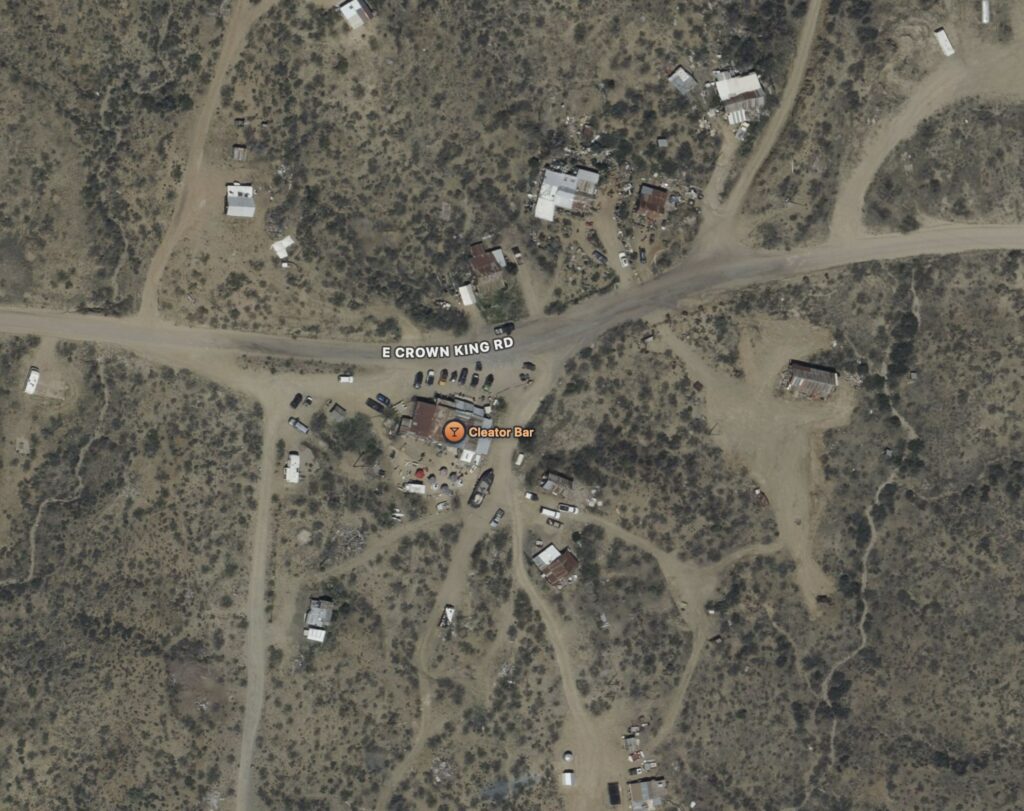
The project area for the proposed drilling activity is 2.5 miles directly south of the community of Cleator and is primarily located in the NE1/4 Section 36, T. 11 N., R. 1 E., with a small segment of temporary access road located in the NW1/4 NW1/4 Section 18, T. 10 N., R. 2 E., Yavapai County, Arizona.
The exploratory drilling program will be targeting precious metals: copper, gold, silver and zinc. Duration of the drilling operation will be up to 80 days. Activities will include a temporary route (0.31 mi.) on the PNF, 3 drill pads, and up to 12 holes drilled. Each drill pad (100 ft. x 80 ft.) will have up to 4 drill holes; up to 3 holes may be drilled up 1500 ft deep and others at 500 ft. The drill pads will host supporting equipment and the drill rig (see enclosed Pad Layout Diagram). Operations will consist of two 12-hour shifts, with 2-3 members per shift. Two staging areas will be located off Forest on private land in Cleator and one on the BLM.
Additional information of the proposed exploratory drilling activities can be found on the Prescott National Forest’s Schedule of Proposed Actions (SOPA) website as project #67345; the project webpage can be found at the following web URL address: https://www.fs.usda.gov/project/prescott/?project=67345 ).
General questions regarding the proposal can be directed to Chris Welker, Prescott National Forest Realty Specialist, Christopher.Welker@usda.gov , (928) 443-8072.
Your comments on this proposal are appreciated, and to be most helpful for our planning process, should be shared with our office by April 4, 2025. To submit your comments electronically, please submit in a format such as an email message, plain text (.txt), rich text format (.rtf), and Word (.doc or .docx) to either the email for Chris Welker (listed above), or to the project’s comment section in the PALS/SOPA webpage via the web URL address (listed above). Please include the project name in the subject line of electronic comments.
You can also submit or provide comments on the project to the Bradshaw and Chino Valley District Ranger Bobbi Filbert at the Bradshaw and Chino Valley Ranger District office at: Prescott National Forest, ATTN: Silver Cord Exploratory Drilling Project, 344 S. Cortez Street, Prescott, AZ 86303. Hand-delivery: same physical address as above, Monday, Wednesday & Friday 9:00 a.m. to 1:00 p.m. and 1:30 to 4:00 p.m.; Closed Tuesday; Thursday 11:00 a.m. to 3:00 p.m.
Sincerely,
BOBBI FILBERT District Ranger
______________________________________________________
Dear Agua Fria Partnership folks,
Yesterday, I presented an overview of the Silver Cord mineral project proposed on USFS and BLM lands by King Global Ventures. In that presentation, as well as my comment letter which Mary circulated, I stated that King Global did not have permission from BLM to improve or build roads on BLM land. I was told this by the Field Office Manager, James Holden, last week. Mr. Holden reached out to me last night and reversed course on his earlier statement, and told me he just learned that BLM had indeed processed a mining notice from King Global. So, I will be deleting the section of my comment letter in which I explain that they did not have permission. If you submit your own comments to BLM, there is no need to state that King Global/Silver Cord is lacking BLM approvals. In the meantime, I have requested a copy of the mine plan and any agency approval documentation.
Happy to answer any questions, joe_trudeau@tws.org
Joe Trudeau, Consultant to the Wilderness Society
3. U of A Water Resource Research Center.

The WRRC 2025 Annual Conference,Shared Borders, Shared Waters: Working
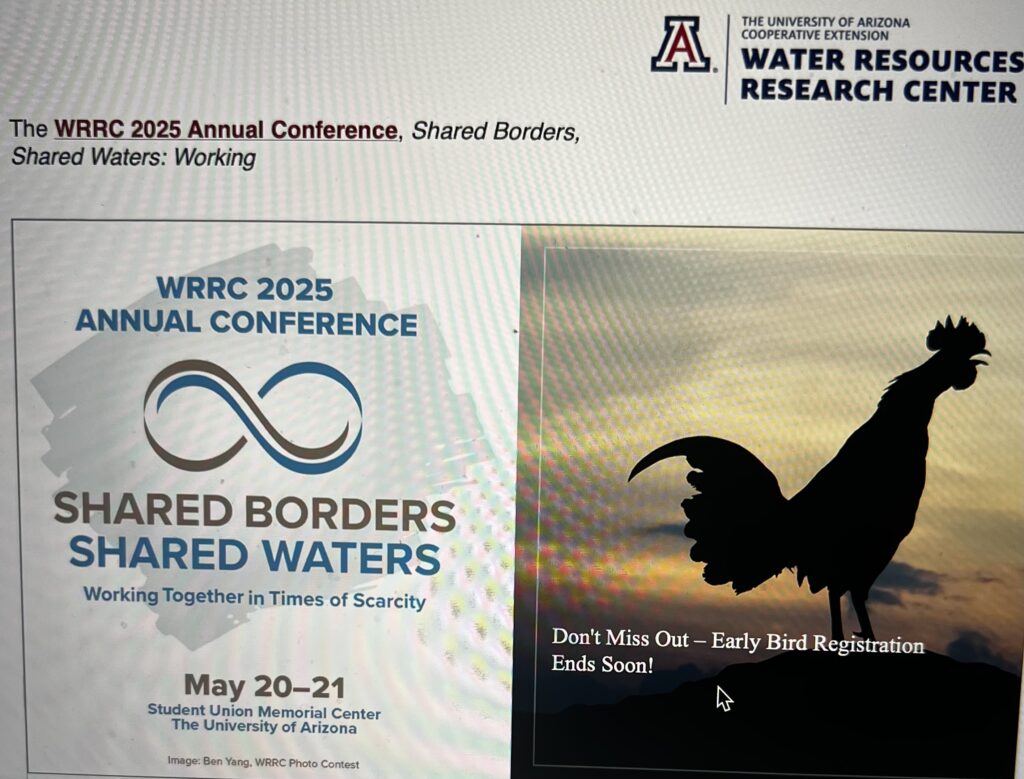

While we strongly encourage in-person attendance to fully experience the event, we are pleased to announce that registration for the FREE non-interactive Zoom livestream is now open for those unable to join us in person. The conference livestream will allow remote participants to follow along with presentations and discussions on cross-border water collaboration, including topics related to sharing the Colorado River and other transboundary waters, infrastructure, funding challenges, and strategies for sharing knowledge.
Given the theme of this year’s event, we are offering real-time English-to-Spanish interpretation via Zoom. Stay tuned for more details!
Don’t Delay — Register Now!
Student Union Memorial Center. With an exciting lineup of speakers and panelists, this multi-day event will explore water collaborations across borders, including US-Mexico partnerships, cooperation with sovereign Tribal Nations, neighboring states, and efforts within Arizona. Be sure to check out the updated agenda for more details on the insightful presentations and panels!
Free Zoom Registration Now Open!
https://www.eventbrite.com/e/wrrc-2025-annual-conference-tickets-907955297737
https://arizona.zoom.us/webinar/register/WN_35RJu6U0QWG8ll-Zo4ZBew#/registration\
Water Awareness Month (WAM) is celebrated annually in April in Arizona, and this year, there will be many events and opportunities throughout the state for the public to learn about different ways to conserve water. The Arizona Department of Water Resources (ADWR), along with water conservation partners from around the state, launched the WAM website in 2011 to bring awareness to our state’s most precious resource — water — and how each one of us can help to conserve it. Unfortunately, this year’s WAM Festival, scheduled for April 5, was canceled due to a conflicting event, but don’t despair as there are other water awareness events you can attend across the state! For example, the City of Flagstaff is hosting various water-focused events this April and the WAM Event Calendar lists many water education events throughout the month.
Another great way to observe WAM is to attend two April WRRC water webinars. On Friday, April 11, 2025, join us to hear leaders of Arizona’s three largest water providers speak on Advanced Water Purification in Arizona. City of Phoenix Assistant Water Services Director Jim Swanson, City of Scottsdale Interim Water Resources Senior Director Kevin Rose, and Tucson Water Director John Kmiec will describe their respective cities’ future water supply plans to incorporate advanced water purification (AWP) to turn treated wastewater into safe purified water, boost water supplies for residents, and address ongoing water challenges in the state. Advanced water purification significantly increases potable water supplies while ensuring that water customers receive the highest quality drinking water. The following Tuesday, April 15, Jim Butler, a Senior Scientist with the Kansas Geological Survey at the University of Kansas, will give a webinar presentation titled Charting Paths Forward for the High Plains Aquifer in Kansas. Butler will discuss how western Kansas is addressing the depletion of the High Plains aquifer and will describe the water balance approach that is helping chart more positive paths forward for Kansas groundwater users.
- More About WAM https://www.arizonawaterfacts.com/wam
- Tips and Resources https://www.arizonawaterfacts.com/tips-resources
- Upcoming WRRC Water Webinars https://wrrc.arizona.edu/calendar
4. EnviroInsight Participates In Glendale Family Bike Ride.

On April 6th, EnviroInsight participated in the City of Glendale Family Bike Ride Event. EniroInsight is a non-profit organization.
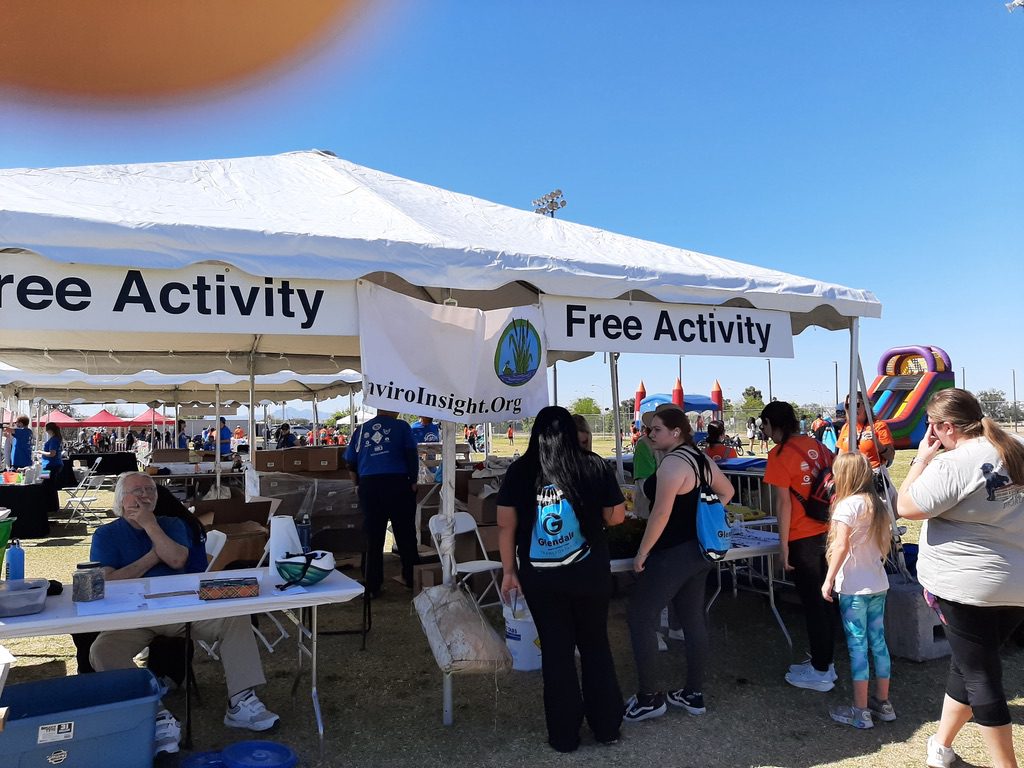

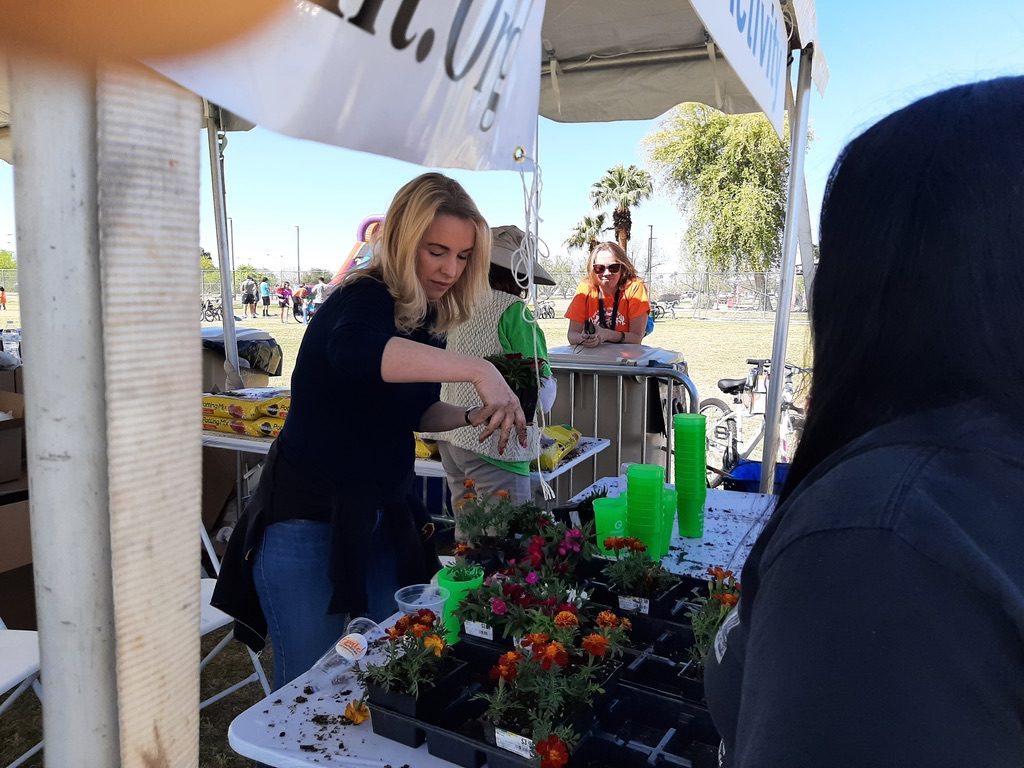
Members and Friends of EnviroInsight.org instructed riders on making a hanging basket from old bike helmets, composting and recycling.
Hundreds of riders visited the EnviroInsight booth and walked away with lots of new knowledge and a flowering plant. Source: Editor
A combination of water management practices has contributed to notable groundwater gains in Central Arizona
5. Groundwater Gains Show Arizona’s Policies Are Working, Yet Climate Risks Still Threaten Water Supply
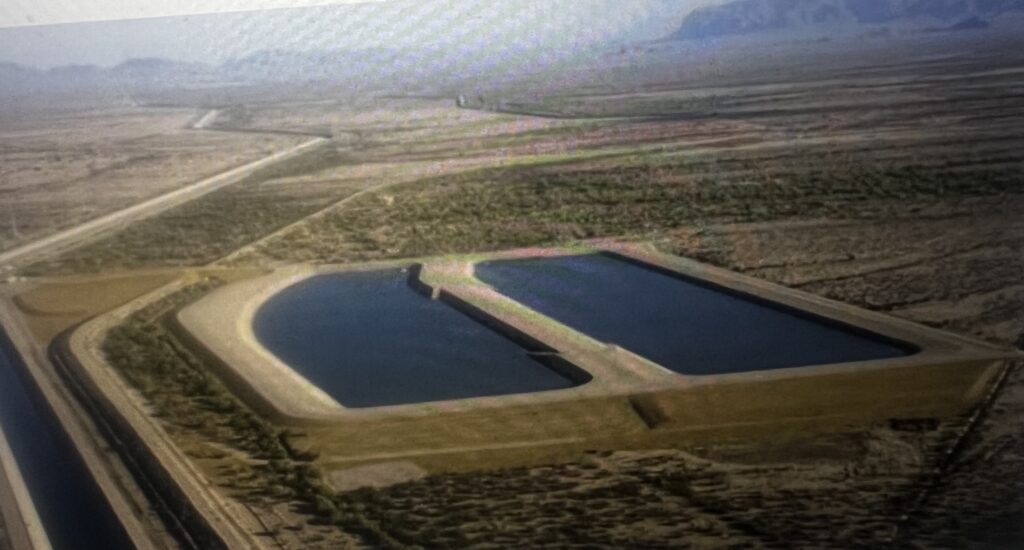
A combination of water management practices has contributed to notable groundwater gains in Central Arizona despite the region dealing with long-term water stress, according to a study led by researchers at The University of Texas at Austin and collaborators in Arizona and Colorado.
Since 1980, Central Arizona has been working to recharge its depleted aquifers. Much of that recharge depends on water from the Colorado River of the southwestern United States. That water, which accounts for 36% of Arizona’s water supply, is brought to the state from over 300 miles away via the Central Arizona Project’s system of aqueducts.
Some of the state’s policies incentivize farmers to use surface water from the river rather than tap into groundwater. Other policies channel the river water directly to aquifer recharge zones, where it can seep down to the groundwater.
According to the study, published in Communications Earth & Environment, these policies have helped save a total of 10.5 cubic kilometers of groundwater water from 1989–2019 in the Phoenix, Tucson and Pinal active management areas, where these policies are in place. Moreover, the researchers found that an additional 14.2 cubic kilometers in the aquifers can be attributed to water seeping in from surface-water irrigation that is not part of an active management program.
Together, the nearly 25 cubic kilometers of water is about five times the annual demand for water in the three active management areas, which are the largest of the state’s seven. These are sizable agricultural districts with a combined size larger than the state of Maryland.
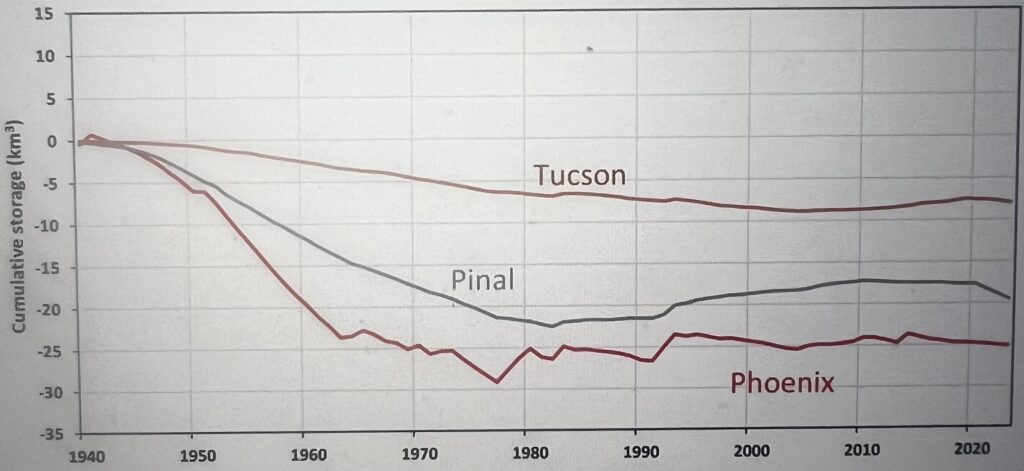
After decades of depletion, groundwater levels are stabilizing in the three largest active management areas in Arizona. These groundwater gains are due in part to policies that encourage groundwater banking, according to research. Credit: Scanlon et al “The research shows the value of conjunctive management of surface and groundwater,” said lead author Bridget Scanlon, a research professor at the UT Jackson School of Geosciences Bureau of Economic Geology.
The researchers note that these gains demonstrate that Arizona’s groundwater recharge policies are working—and that these policies could provide a roadmap for other water-strapped regions. However, the water provided by the Colorado River faces an uncertain future. Two decades of extreme drought have led to big water declines: the country’s two largest reservoirs, Lake Powell and Lake Mead, have gone from 90% capacity in 2000 to about 30% capacity in 2025 due to the river’s declining flow, and the river is expected to face further declines due to climate change.

That means that even with these groundwater gains, sound aquifer management in Central Arizona will face new challenges, said co-author Kathryn Sorensen, the director of research at Arizona State University’s Kyl Center for Water Policy and the former director of Phoenix Water Services.
“It’s a lot of water, and that’s great. We should celebrate that. But shortages on the Colorado River mean we’ll have less water to boost our aquifers, and more pressure to pull groundwater out as a replacement supply,” Sorensen said.
The research findings on the Arizona aquifers are just one aspect of the study, which tracked surface water and groundwater gains and losses across the entire Colorado River Basin over decades. The researchers drew on GRACE satellite data, regional models and groundwater level monitoring data to show how water levels have changed in response to wet and dry periods and human interventions.
Colorado River Basin map, hydrologic parameters, and representative geologic cross-sections. Credit: Communications Earth & Environment (2025). DOI: 10.1038/s43247-025-02149-9
In addition to showing the importance of intentional groundwater banking policies, the study showed how incidental seepage from irrigation has also helped recharge the aquifers, which were initially depleted by intensive groundwater pumping from the 1940s–1970s, and how a wet period from the 1980s–1990s provided an additional boost.
“I don’t know if we’ll ever see a wet period like the ’70s through the early ’90s again, but we need to take advantage of those wet periods and get the water into the ground whenever and wherever we can,” said study co-author Don Pool, a retired former hydrologist for the U.S. Geological Survey’s Arizona Water Science Center.
Discover the latest in science, tech, and space with over 100,000 subscribers who rely on Phys.org for daily insights. Sign up for our free newsletter and get updates on breakthroughs, innovations, and research that matter—daily or weekly.
Water allocations from the Colorado River are governed by a 1922 compact and reservoir operating rules that are set to expire in 2026. Policymakers from different states, Indigenous communities and Mexico are convening to renegotiate water draws. Scanlon said that the broad scope and span of the research can help with planning sustainable water use from the river.
“You can see how things have been changing over time,” Scanlon said. “And that’s important if you’re trying to understand climate variability, variations in irrigation pumpage, conjunctive management and put it into context.” Source: University of Texas, Austin
Copyright: 2025 EnviroInsight.org
